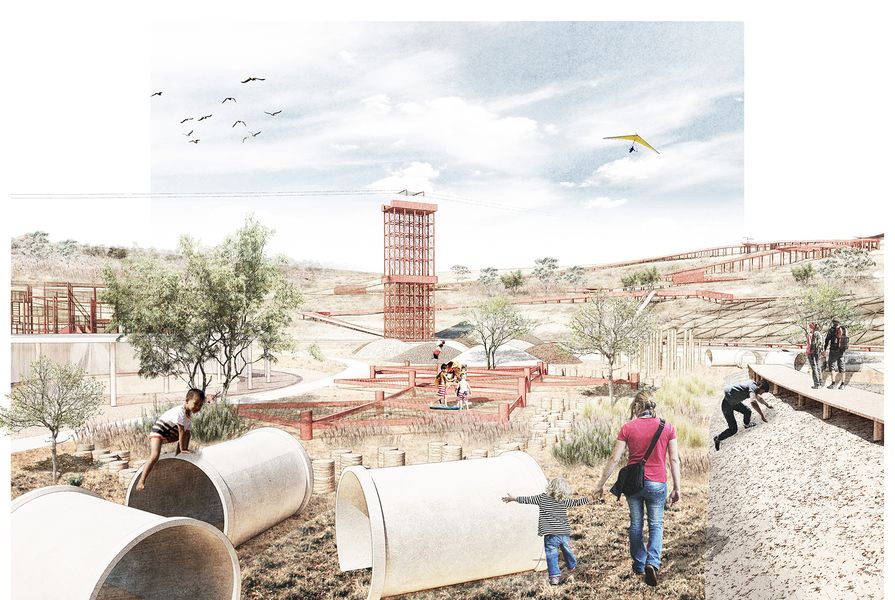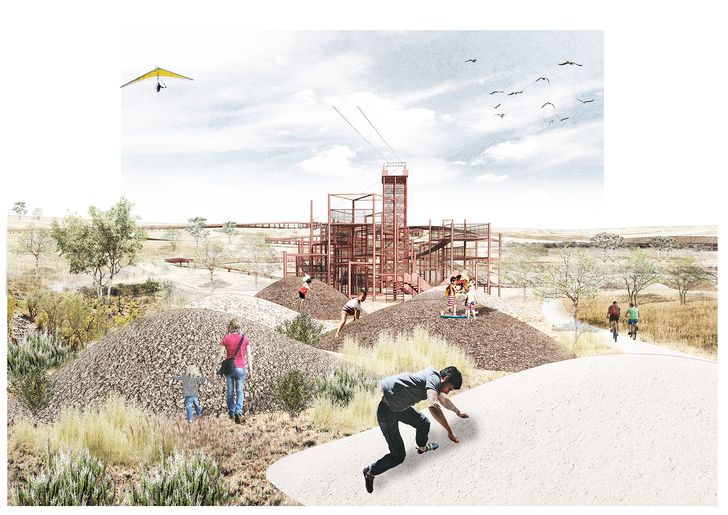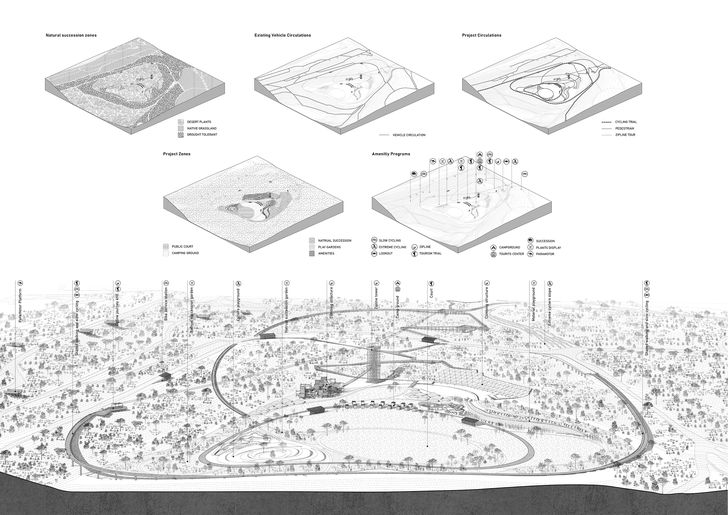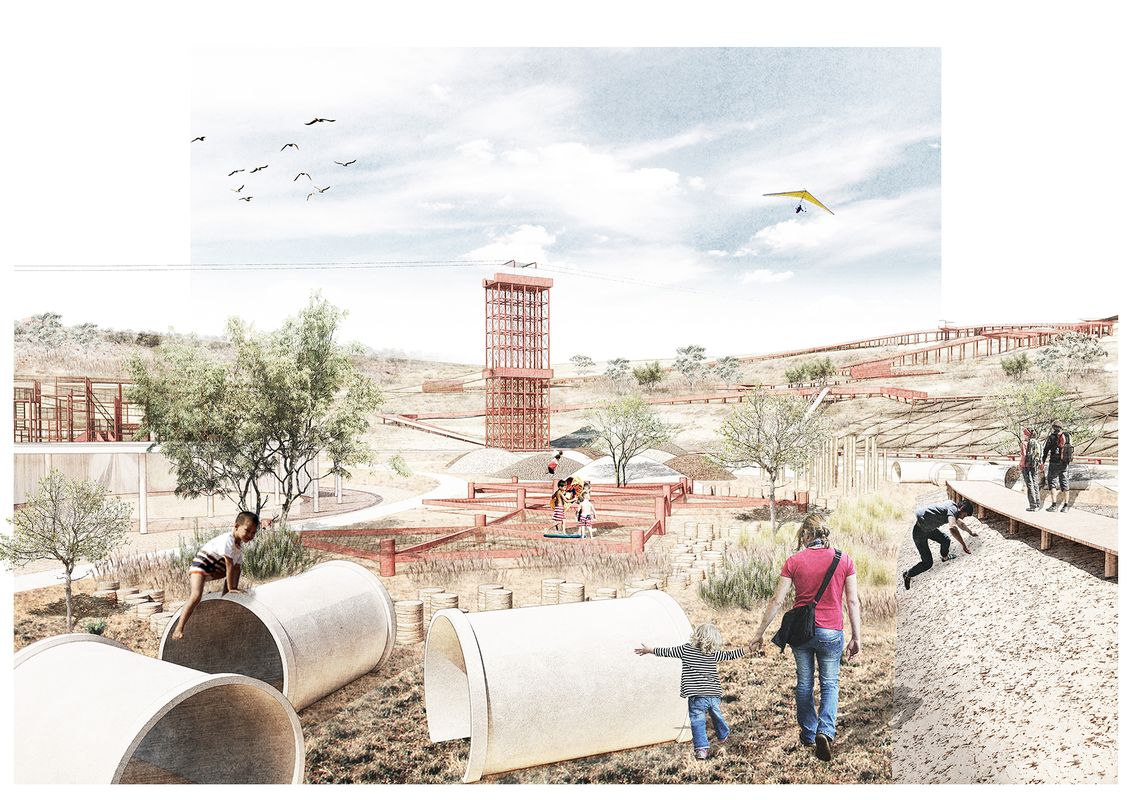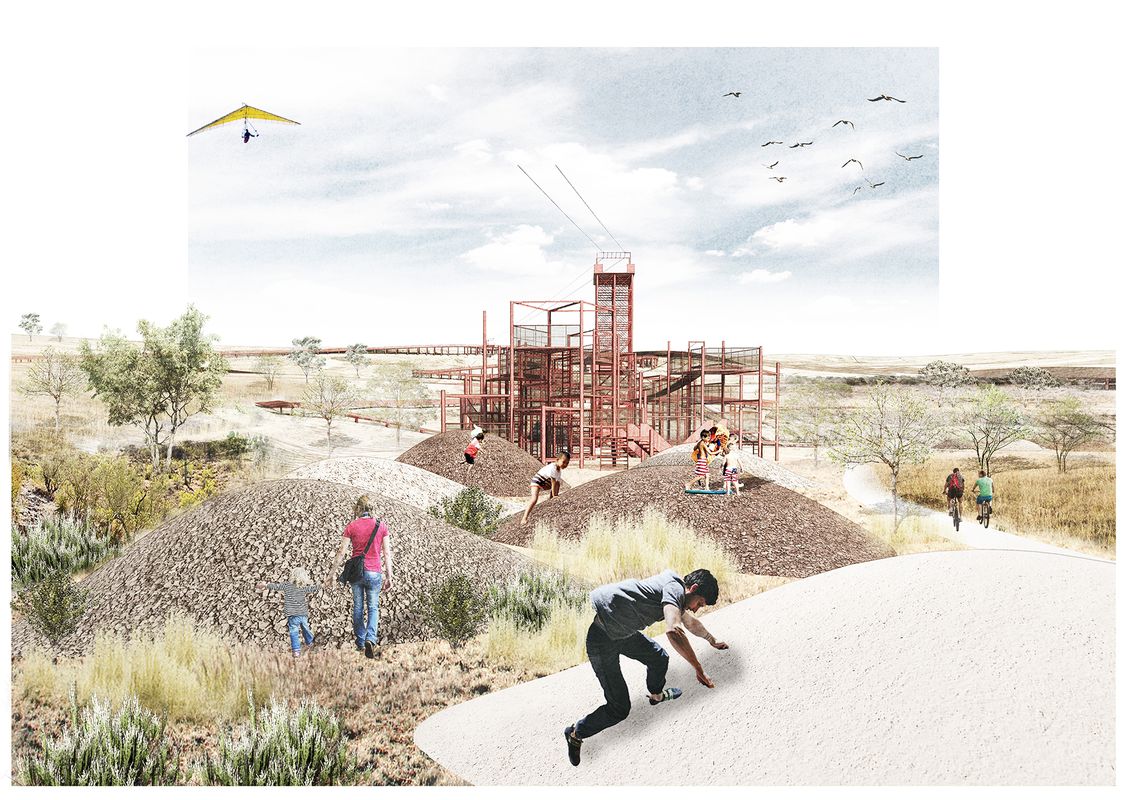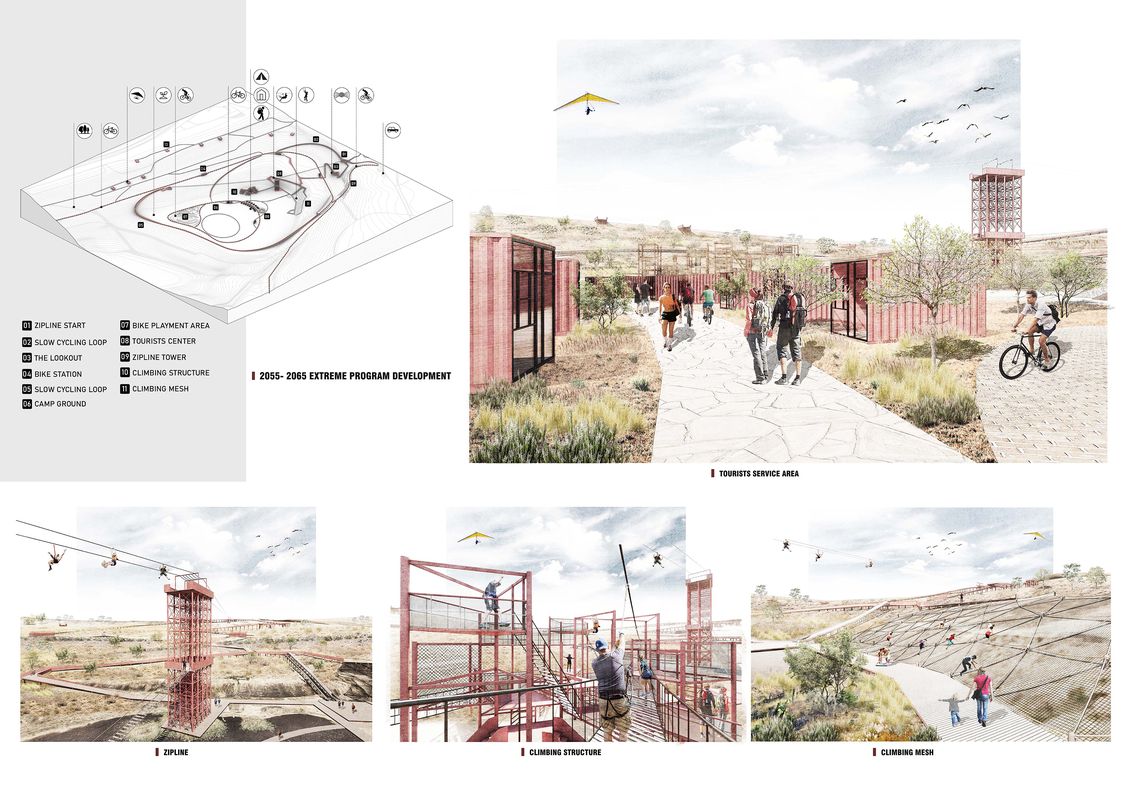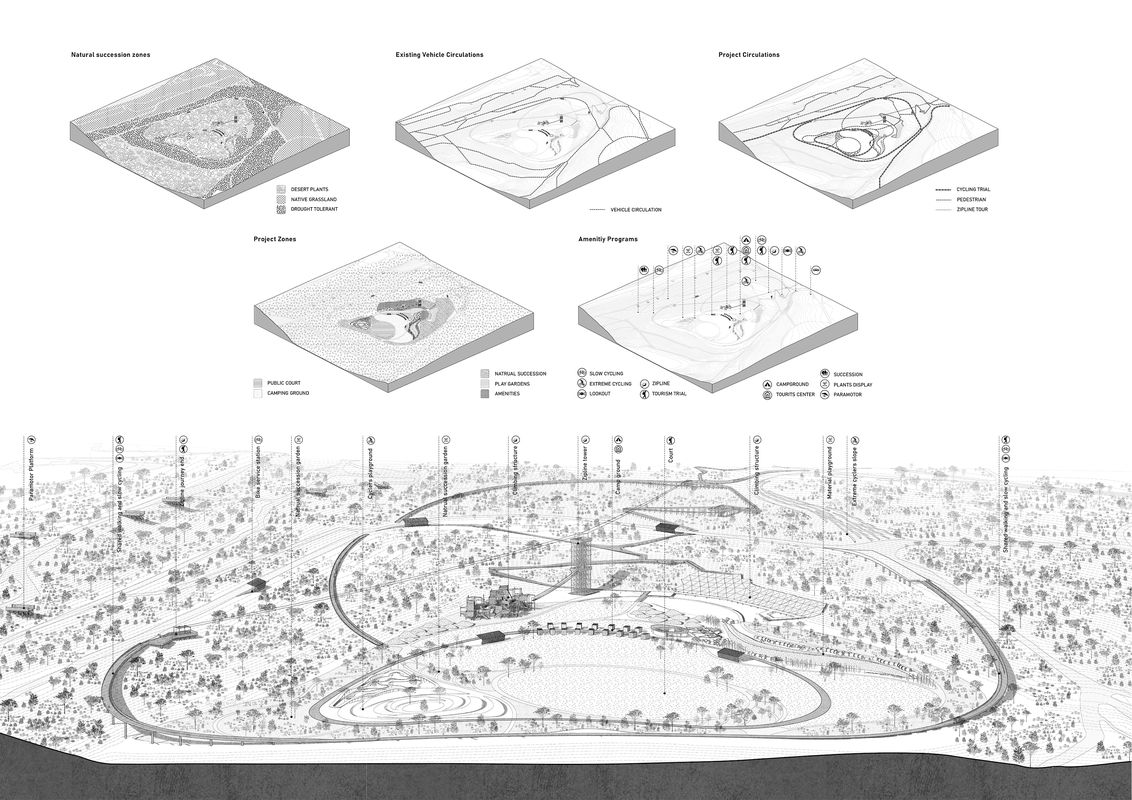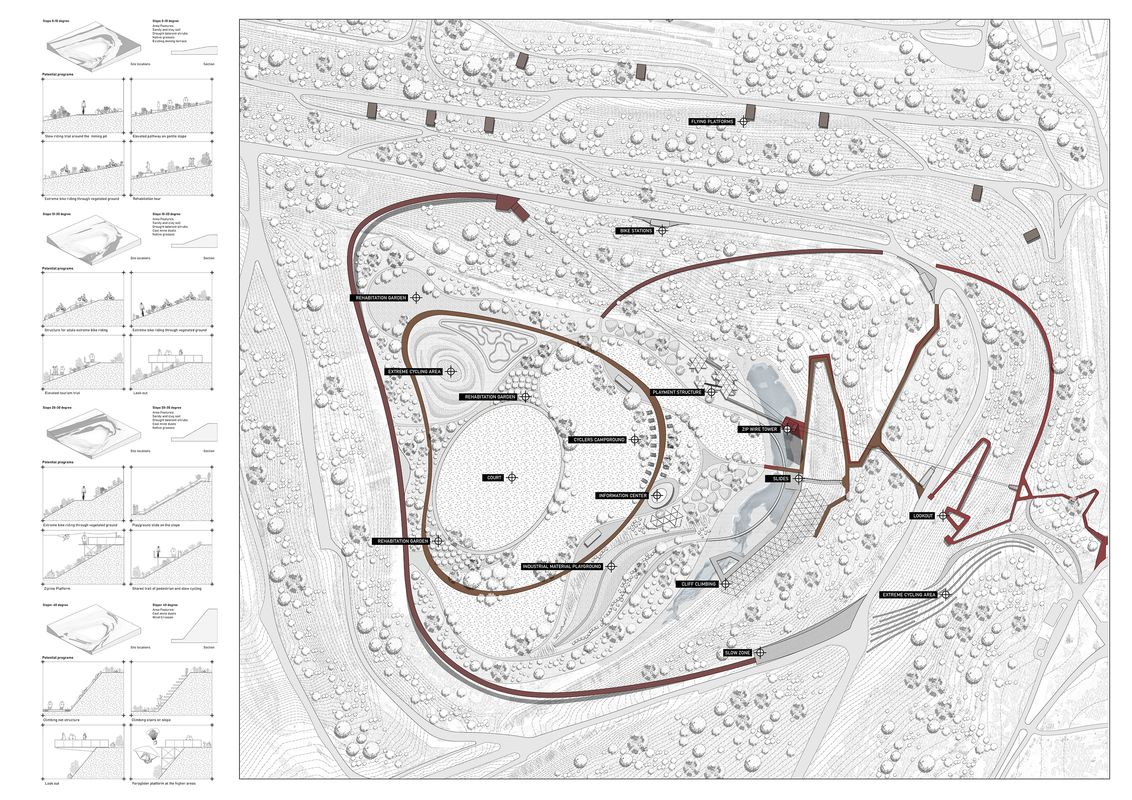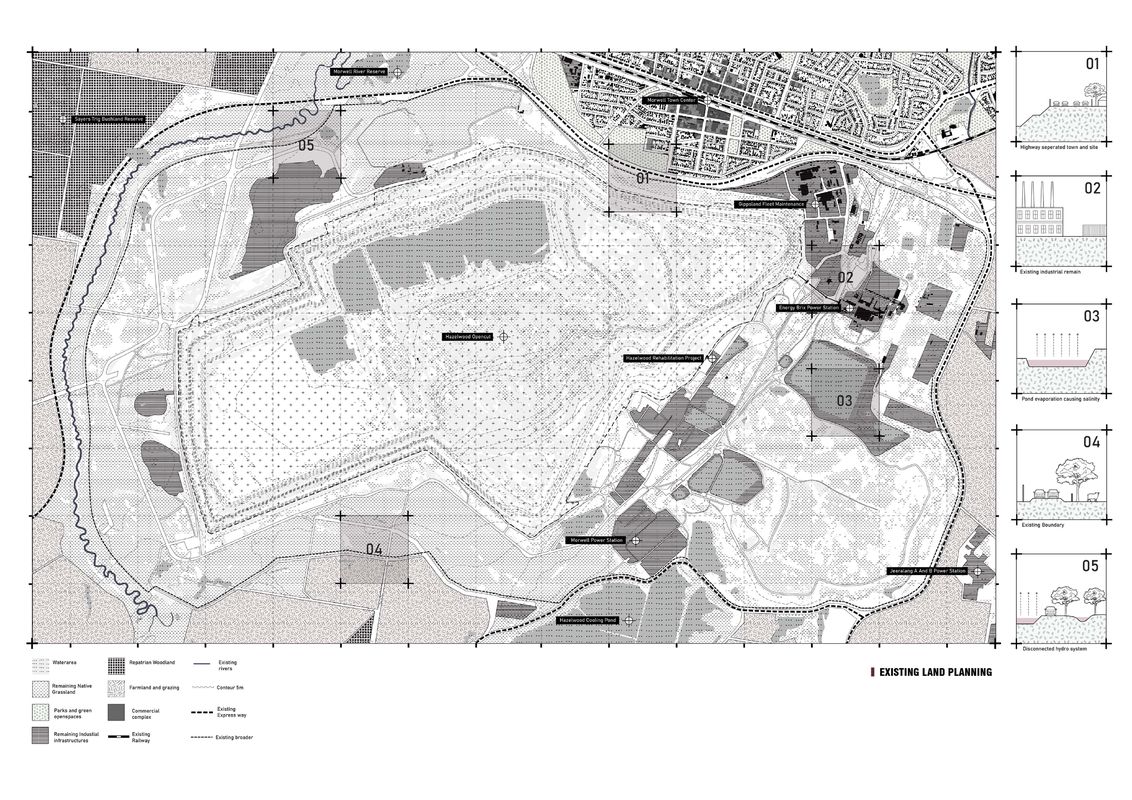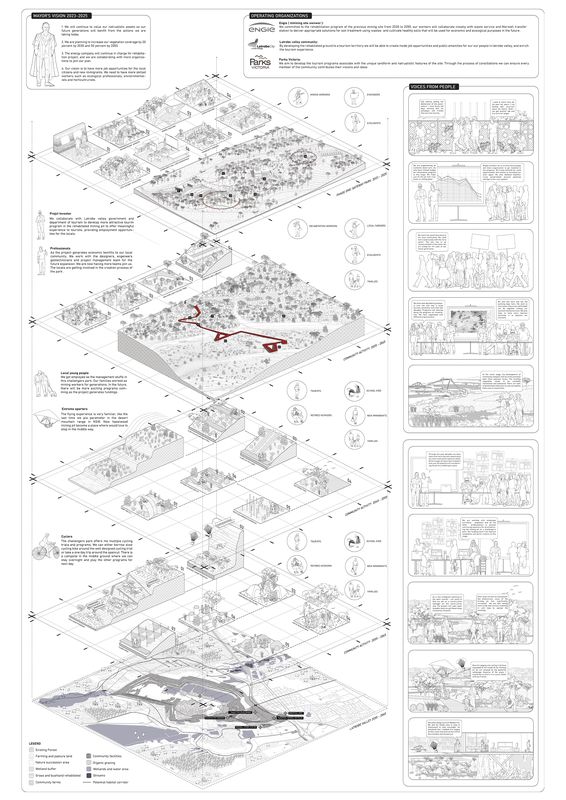Landscape Australia: Haoyang, tell us about Hazelwood, the open-cut mine in the Latrobe Valley, which your project takes as its subject.
Haoyang Wang: Hazelwood is an open-cut mining pit that was abandoned in 2014 after a catastrophic fire. Now the community is looking for a way to transform the mine into tourism infrastructure within a few decades. Surrounding the mining pit, there are also quite a few mining projects, for instance, Loy Yang open cut mine, which will be decommissioned within the next decade or so.
Your project grapples with what it means for the local community, these mines being decommissioned. How did you engage with the community?
HW: I went out to Morwell – it was a long journey from Melbourne – and I found people in the community centre, and also in shopping malls, and I asked about the mining history of the town, and what they think the mine site should be in a post-mining era. I also found all these Youtube videos posted by locals talking about their past memories of mining and also about housing prices and their concerns about what will happen after the industry is gone.
By 2065, the project is envisaged to be self-funded with the site becoming a focal point for many different kinds of tourism.
Image: Supplied
Central to your project is this idea of collaborative management. What would collaborative management look like at this site?
HW: The most critical thing about the mining site is that it’s a huge site. I flew a drone across the whole mining pit, and I realized how large the scale is. For the mining company, if they do the rehabilitation it’s going to take a long time… and it would just be operated by a single organisation. But what if there is a lack of funding? These energy companies want to quickly get rid of what they have done, quickly do the rehabilitation. But very often rehabilitation has failed in Australia, such as in the Hunter Valley.
My project tried to investigate how different organisations will come together to collaborate and mutually benefit each other. I think one of the really important things about my project is that it’s not to be done in a short amount of time and operated by one particular organisation. It’s going to be an initiative that’s started by one or two government or non-government organisations trying to sell the vision of the site to the community and to investors.
The project starts out as a “Gateway Park” that will attract the funding from the local community and the non-governmental organisations. The Gateway Park will connect to the past of the mining sites, the emotions and memories of the past, and also speculate to the future – the natural succession environment and the public amenities it’s going to offer. Within the project, I’ve considered Parks Victoria and a few different kinds of developers, for instance a tourism developer and an extreme sports program developer, and also the local government and the Latrobe Valley Authority. I’ve tried to consider all the different organisations operating behind the scenes of the project.
Image: Supplied
You’ve also created space for potential tension between these groups; you talk about how the mining company wants to cut costs, if they can, while the community wants more control over what will happen at the site.
HW: Exactly.
Could you describe how people would experience the site as it changes over 60 years or so?
HW: First things first, the mining company needs do the rehabilitation around the open mining site. The plants they use will need to be able to adapt to the soil. It will mainly be brackish plants and other plants that can adapt to the really harsh soil conditions. And then, the experience will change across different timeframes. Initially it’s going to be a rehabilitated area, more like the a bushland experience. The habitat gradually comes into it, and once people see the potential of the rehabilitated site, they will take advantage of the landform to build in a whole range of community activities and tourism programs. From a lookout, it will gradually become a cycling trail that’s surrounding the open cut, allowing people to explore this amazing landform, which is like a gorgeous valley.
Once the rehabilitated area is gradually reaching to the middle of the site, tourism companies will see the opportunity to really fully engage with the landform of the site, and it will gradually become an extreme sports park with zip lines and climbing structures. It will also utilize the remains from the surrounding knocked down power stations. There will be an assemblage of artefacts and mining materials for the children to play in and climb. There will also be different sort of programs for young tourists, and people can stay there overnight.
Image: Supplied
Were there particular mining rehabilitation projects that you looked at for inspiration?
HW: The precedent projects that I’ve been looking at are particularly focused on the experience of going across a mining site, where its geological features are partially maintained alongside rehabilitated ecological features. One example is Z and T Studio, currently based in China; they have focused on a few interesting projects transforming former mining sites into play infrastructure. Another one is the transformation of a former quarry in the USA, where all these different platforms and climbing structures really engage with the unique landforms of the site. They provide an opportunity for tourists to play and offer different experiential and meaningful programs.
What kind of impact would a project like yours have?
HW: It would offer working opportunities to the local community, for the local community to keep their town activated. From what I’ve seen, after mining sites are shut down, a lot of mining towns become something like Detroit. Losing that supporting industry, people have no idea how to live in that place, so they move away to a more affordable place with opportunities. I think this project will offer that opportunity, and it will allow the community to participate. It will be a really dynamic site, shaped by different points of view and different aspects, both economic and ecological.
Image: Supplied
Sidh, could you talk about what it was like supervising the project? It is such a complex project, with many different parts to it.
Sidh Sintusingha: It was both a very pleasant and challenging project to supervise, and that’s because of how ambitious it was. It’s a project that is extremely wide in scope and scale, and the temporal dimension as well – we’re talking almost a century time period of collaborative management, which suggests generations passing on the torch. There’s the institutional building, in terms of building that capacity to manage the place and its evolution across that time period. And it’s also a landscape architecture project that engages directly in a specific place at a specific time. So, it has to do both. You can see that it’s very well researched, he really knows the place well. It’s a very powerful project.

